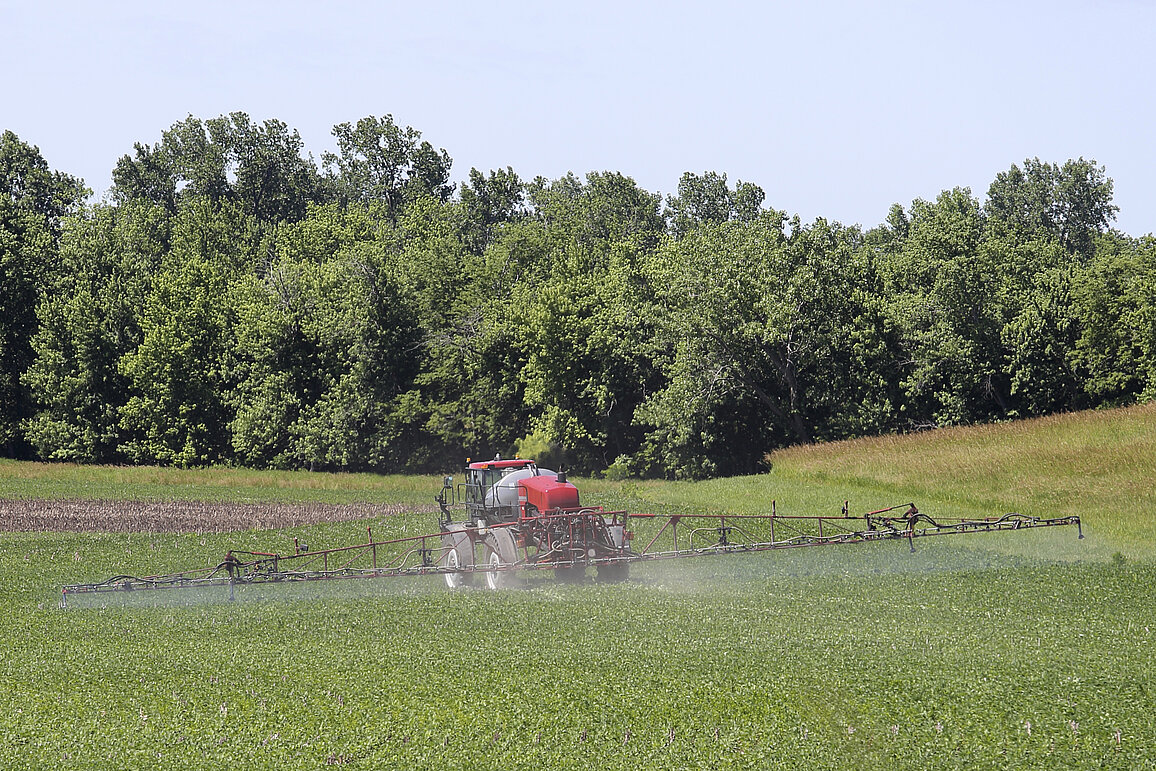NDSU Research Examines Precision Agriculture Technology Adoption and Usage

The ancient Greek philosopher Plato said that necessity is the mother of all invention, meaning that a specific need or problem encourages the creative efforts to solve that problem.
The introduction of precision agriculture technologies has helped modern farmers solve many problems. Satellite imagery, unmanned aerial systems (UAVs), auto-steer, sensors and data analytics are all part of the technology that some farmers use to help them deal with the growing complexities of farming.
But the cost of these technologies can be prohibitive for some operations, and the training and knowledge needed to operate them can make some producers shy away from using them.
For precision agriculture technology manufacturers, the need to understand who is using these technologies and how they are being used is vital to remaining in business. For policymakers, understanding how the technology is being adopted can help direct funding for future precision agriculture research and education. For farmers, knowing what technology their peers are adopting can help them make more informed decisions about the future of their operations.
Using funding from the State Board of Agricultural Research and Education, Max Cossette, an NDSU graduate student in agricultural economics, set out to study precision agriculture technology adoption and usage in North Dakota.
“We collected survey data from 237 farmers who are landowners and actively involved in decision making on their farms,” Cossette says. “Our goal was to identify data patterns in the adoption and intensity of usage for seven different precision ag technologies: global positioning system (GPS) guidance, auto-steer; automatic section control (ASC); satellite imagery; unmanned aircraft systems (UAVs); variable-rate nitrogen application (VRNA); and variable-rate seeding (VRS).”
Working with Erik Hanson and David Roberts, NDSU Department of Agricultural and Applied Economics assistant and associate professors, respectively, and Paulo Flores, NDSU Agricultural Biosystems and Engineering assistant professor and precision agriculture expert, Cossette identified several key findings:
- The most commonly used precision agriculture technology on North Dakota farms is GPS guidance and autosteer, with a 58.2% adoption rate.
- ASC sprayers are being used by 48.1% of survey respondents and VRNA technology is being used by 30.4% of respondents.
- The age of respondents had negative effects on the adoption of many precision agriculture technologies, indicating the older producers are, the less likely they are to adopt these technologies.
- The more acreage of no-till land producers have, the more likely they are to adopt ASC sprayers and VRS planters. Researchers agree that a possible explanation for this is that equipment operators have a hard time judging shut-off points for sprayers and planters because of stubble on no-till land. Therefore, these technologies may provide increased efficiency and savings on no-till ground.
- Conversely, no-till land acreage had a negative effect on the adoption of satellite imagery, signifying that satellite imagery is used less on no-till ground. A likely reason for this is crop stubble can interfere with normalized difference vegetation index (NDVI) measures that satellite imagery uses in early season crop monitoring.
- Acres in cultivation had positive effects on the adoption of VRS, VRNA, satellite imagery for nitrogen management, GPS guidance, auto-steer and ASC sprayer technology. Researchers expected this finding because these technologies provide greater economic benefit when used on more land.
- The more acreage of wheat a producer planted, the less likely they were to adopt VRS and VRNA technology. Researchers speculate that wheat’s small seed size contributes to the negative impact on VRS technology usage. Wheat acreage’s negative impact on VRNA technology adoption is likely due to nitrogen being applied at a low rate on wheat, with in-season application often not required.
Future Precision Agriculture Technology Adoption
“One of the main goals of this study was to see what technologies North Dakota farmers are currently using and to help them gain an understanding of where the industry is headed in the future,” Cossette says.
The research indicates that farmers plan to increase their use of precision agriculture technology. Survey respondents indicated that during the next five years:
- 28.7% plan to increase their use of VRNA technology
- 27.4% plan to increase their use of VRS technology
- 27% plan to increase their use of satellite imagery
- 19% plan to increase their use of UAVs
“Our family has been using much of this technology on our diversified grain operation for more than 15 years,” says Thomas Richman of Tower Farms Seed in Tower City, N.D. “Most recently, we’ve seen the real-time benefits of UAVs for scouting disease, checking field drainage and general crop progress.
“Our goal for the future will be to continue to use these technologies and the resulting data to help us create a strategic, highly-efficient, whole-systems approach to farming,” Richman adds.
----
For more information: Erik Hanson, 701-231-5747, erik.drevlow.hanson@ndsu.edu


